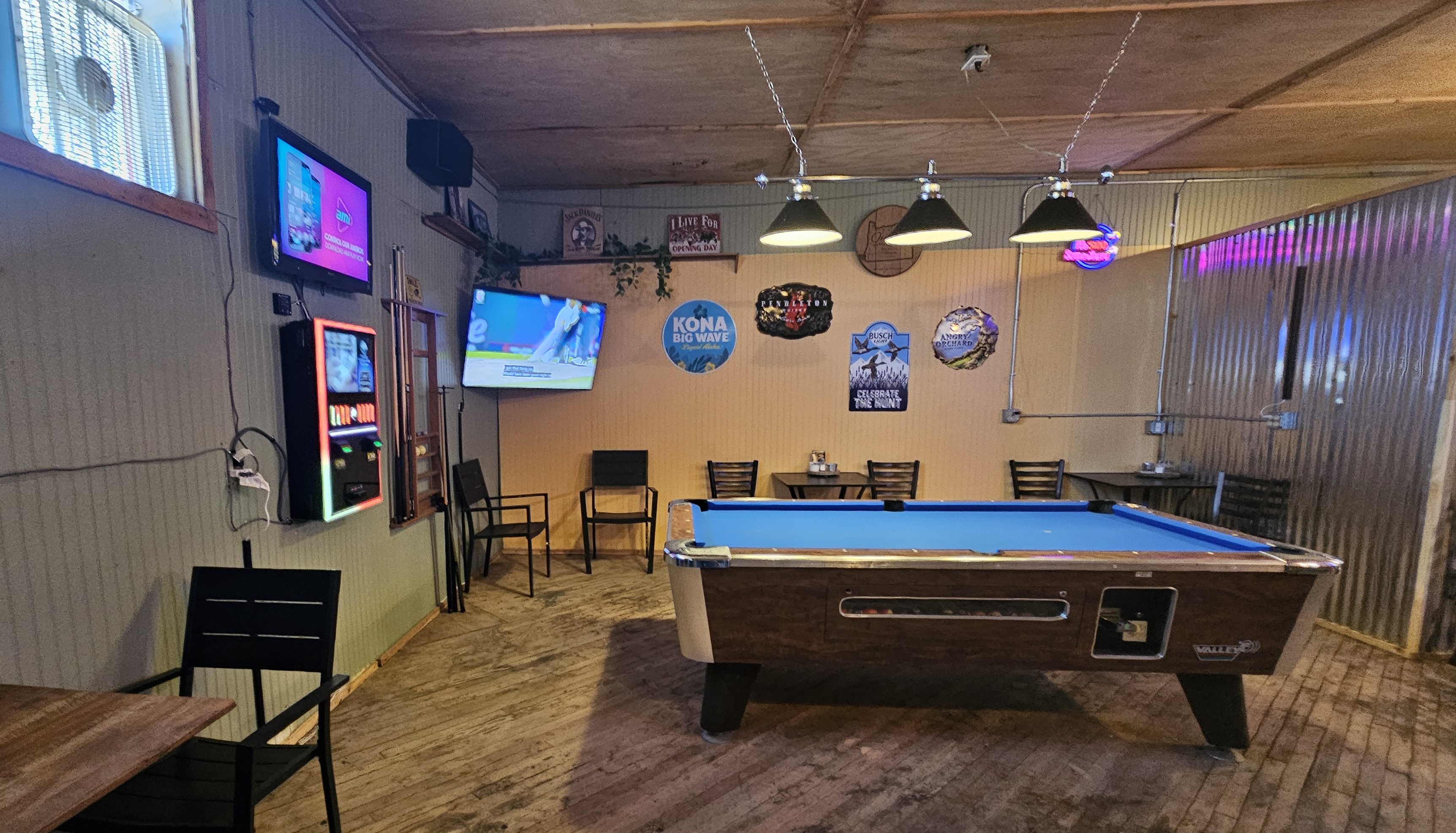No phones: Baker schools tighten cellphone policy
Published 9:00 am Thursday, September 26, 2024

- Students in grades 7-12 in the Baker School District will be provided with Yondr pouches to secure cellphones during the school day. The pouch on the right has a lock; the pouch on the left has strong Velcro, and is used for students who require access to their phones for medical needs. The pouches will be used at Baker Middle School, Baker High School and Eagle Cap Innovative Junior/Senior High School.
BAKER CITY — Battling distraction from cellphones will no longer be an issue for older students in the Baker School District starting in late September.
Trending
At least not during school hours.
Baker Middle School, with grades 7-8, and Baker High School, grades 9-12, already had a policy that required phones to be “off and away.” Eagle Cap Innovative Junior/Senior High School, which combines online and classroom work for grades 7-12, had students check in their phones at the office.
This year, to help students resist the temptation of picking up their phones despite the rule, the schools are providing Yondr pouches, which lock and can only be unlocked by a special magnet.
Trending
At BMS, pouches will be locked from the beginning of school to the last bell of the day. At BHS, students can unlock the pouches during lunch, because the school has an open campus, but not during passing periods. Students will be responsible for bringing the pouches to school every day.
At Eagle Cap, pouches will be kept at school, said Principal Vannessa Haggett.
Kate Montani, a Yondr representative, met virtually with BMS staff during a training on Aug. 21 to explain the pouches and the impact of a cellphone-free school.
First, she noted that the average student is on social media about three hours each day.
“Students are really distracted,” Montani said. “They’re somewhat addicted to their phones.”
Yondr is a padded pouch that can fit two smartphones, a smart watch and ear buds. Upon arrival at school, students will either turn off their devices or turn on airplane mode, then put the devices in their pouch and lock it.
At BMS, pouches will be kept in student lockers. At BHS, students can put the pouch in their backpack or locker.
Montani said Yondr is used by one million students in all 50 states and 27 countries, and school surveys have reported 72% saw a positive change in behavior and 68% saw a positive change in academics.
“We’ve seen transformative results,” she said.
Unlocking stations, which are about the size of a Frisbee, will be placed at three entrances/exits at BMS — cafeteria, main office on Washington Street and Fourth Street.
At BHS, two stations will be available at the front doors, and four in the commons area.
In addition, the school offices will have handheld devices to unlock a pouch if a student is leaving before the end of the school day.
To unlock the pouch, a student taps the lock to the magnet, which will be unscrewed from the wall mount during the day.
“It can only be unlocked by a highly specialized magnet,” Montani said.
Students who need their phone for medical reasons will use a pouch that closes with strong Velcro.
When asked if students can buy a magnet to unlock the pouch on their own, Montani said it’s only happened once in 10 years — and that magnet erased all content on the phone. (That doesn’t happen, obviously, with the Yondr magnet.)
The schools will start using Yondr pouches in late September.
“We’re helping our kids to unplug because they never get an opportunity to,” said BMS Principal Amanda Wilde. “We’re getting rid of the noise for our kids.”
BHS Principal Skye Flanagan offered this example for removing distraction from the classroom: “If a kid was bouncing a tennis ball on a racket in the middle of class, we’d take it away.”
The school is not, he noted, taking phones away — the goal is to help students focus in the classroom.
“We’re protecting the learning environment,” he said. “The issue is not preventing kids from using their cellphones, it’s giving them a distraction-free environment.”
The district spent $27,234.55 of Student Investment Account grant money to purchase the Yondr products, said Lindsey McDowell, public information and communications coordinator for the Baker School District.
If a pouch is damaged, parents are responsible for the replacement cost of $30. Examples of damage include a bent pin, ripped fabric and deep scratches on the lock exterior.
If a student forgets their pouch at home, their phone will be kept in the office and returned at the end of the day.
Montani said 40 schools in Oregon are using Yondr pouches, and Baker School District is the first in Eastern Oregon.
“Our students deserve a distraction-free learning environment. Unplug and focus on school,” she said.
Both Wilde and Flanagan said school staff will also have their cellphones off and away during class, but available for emergencies. Regular, wall-mounted phones are located in every classroom for communication with the office.
At the elementary level, cellphones and other wearable smart devices are not allowed during school.
Emergencies
During her presentation, Montani said parents are often concerned about reaching their child during an emergency if phones are secured in Yondr pouches.
The reality, she said, is that cellphones can complicate an emergency situation.
“Cellphones cause way more confusion and can be a distraction during an emergency,” she said.
Instead, students should focus on their teacher.
“They know what to do in case of an emergency,” she said.
Wilde said the district office handles communication during an emergency by sending messages through ParentSquare as soon as possible.
Calling the office
Wilde and Flanagan said that students can request to use the phone in the school office if they need to reach a parent. Also, if a student would rather make the call on a personal cellphone, both principals said the pouch can be unlocked in the office.
To reach a child during school hours, parents can call the office and have a message relayed to their student.
Phone numbers are 541-524-2500 for Baker Middle School, and 541-524-2600 for Baker High School.
Schools across Eastern Oregon are cracking down on cellphone use during school hours.
Burnt River Charter School
Superintendent Cassie Moore said the school board adopted a new cell phone policy this year — phones are off and away unless given permission (except during lunch and breakfast).
Grant Union Junior/Senior High School
Cellphones are allowed on campus, but students cannot have them out in class without teacher approval. Phones can be used during lunch.
At Humbolt Elementary, phones must be set to silent or turned off and kept in a backpack.
Heppner
Junior high students (grades 7 and 8) are not technically permitted to have them out at all, even before school starts. They can have them in their backpacks but they need to be turned off.
High school students can have phones, but not use them during instructional time. This has been the policy that’s been in place for at least two years.
Hermiston
La Grande
Morrow County School District
Cellphones are not to be used in the classroom without permission (for a justifiable educational purpose) for junior high and high school.
Pendleton
Sunridge Middle School has a policy of “bell to bell, no cell.” Phones are off and away in backpacks for the entire school day, and aren’t allowed during lunch or passing periods. Exceptions are made for students with a diagnosed medical condition that requires a phone for monitoring health.
Pendleton High School instituted a new policy this year with no phones during class, but allowed during lunch and passing periods.
North Powder School District
Students are required to keep cellphones in their lockers or in their vehicle during class during the school day. Accommodations will be made for students who need to use a phone for a diagnosed medical condition.
Pine Eagle School District
Principal Morgan Gover said Pine Eagle staff, in a meeting at the end of the last school year, unanimously agreed to address phone use this year. They have two mottos: “Off and away, all day” for grades K-8, and “Bell to bell, no cell” for grades 9-12. Phones are allowed during passing periods and lunch for the high school.
She said students have appeared more relaxed this year with the change, which she said has been positive.









